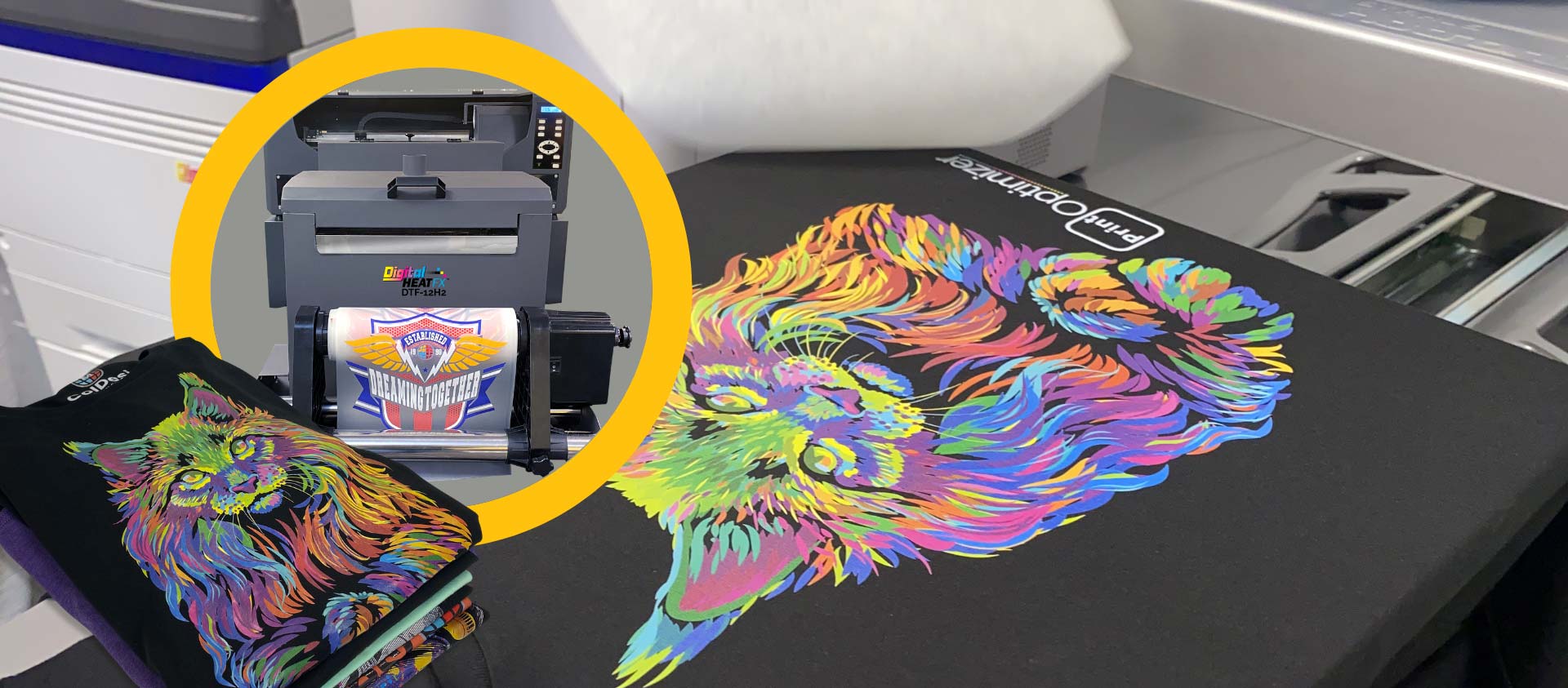A Deep Study DTF Printing: Strategies, Advantages, and Sector Applications
A Deep Study DTF Printing: Strategies, Advantages, and Sector Applications
Blog Article
Mastering DTF Printing: Idea for Achieving Vibrant and Long Lasting Prints
On the planet of textile printing, attaining vibrant and long lasting prints is a desirable skill that can raise the top quality of your output. Grasping DTF (Straight to Movie) printing requires a blend of technological expertise, precision, and interest to detail. From choosing the ideal products to tweak print setups and developing post-printing finishing methods, there are many variables that can influence the result of your prints. Comprehending just how to browse these complexities can make all the difference in between a sub-par outcome and a truly outstanding one.

DTF Printing Fundamentals
For those brand-new to the globe of textile printing, understanding the principles of DTF printing is vital to understanding this cutting-edge method. Direct to Film (DTF) printing is a modern approach that entails transferring designs from an unique film onto various fabrics utilizing a heat press. Unlike traditional approaches like screen printing, DTF offers benefits such as lively colors, intricate describing, and the capability to print on varied materials like cotton, polyester, and blends.
The procedure begins by publishing the style on a special DTF movie utilizing a compatible printer with CMYK or CMYKW ink collections. When the design is published, it is after that treated with a warmth press to produce a durable and resilient print. DTF printing is known for its capacity to replicate complex styles with high precision and color precision, making it a prominent selection for companies aiming to produce personalized clothing, advertising items, and much more.
Picking the Right Materials

The glue powder acts as a bonding representative between the published style and the material, so it must have solid bond homes to guarantee a resilient and resilient transfer. By carefully picking the ideal materials for DTF printing, printers can boost the high quality, vibrancy, and longevity of their prints.
Maximizing Publish Settings
When aiming to attain the best results in DTF printing, careful focus to optimizing print settings is vital for making certain exact and top quality transfers onto fabrics. One key element to think about when maximizing print setups is the resolution.
While increasing the rate can boost performance, it might jeopardize the final print's clarity and color saturation. Experimenting with various rates and observing the results can help identify the ideal setting for each print job.
Furthermore, make improvements shade accounts and guaranteeing proper shade monitoring are necessary for accomplishing precise and consistent colors throughout various prints. By calibrating shade setups and profiles, printers can decrease shade discrepancies and produce consistent results, enhancing the general print high quality and customer satisfaction.
Preparing Art Work for DTF Printing
To make sure optimal outcomes in DTF printing, precise focus to detail is important when preparing art work for transfer onto textiles. Begin by picking high-resolution pictures to maintain clearness and sharpness in the last print. Vector home graphics are chosen as they can be conveniently scaled without losing quality. Convert the art work to CMYK color setting to guarantee that the colors equate accurately from display to print. Change the color degrees and contrast as needed to boost the vibrancy of the design. When including message to the artwork, pick font styles that are clear and suitable for the intended dimension. Keep in mind to mirror the final layout before printing to make sure that it moves properly onto the garment. Furthermore, consider the material type and color when selecting the art work, as these elements can influence the final look. By following these steps and paying very close attention to the information, you can prepare art work that is optimized for durable and vivid DTF prints.
Post-Printing Finishing Techniques
Carrying out reliable post-printing finishing strategies is crucial to improving the durability and aesthetic allure of DTF prints on textiles. As soon as the printing go to website process is total, applying heat to the printed design is necessary (DTF Printing). Warmth not just help in treating the ink however likewise guarantees that the colors are dynamic and lasting. A heat press machine established at the advised temperature level and stress settings can help achieve optimal outcomes.
Once the movie is removed, the print might require added curing time to additionally set the ink into the material. This step aids enhance the washability and longevity of the print, guaranteeing it can endure numerous wash cycles without fading or fracturing.
Additionally, cutting any excess film around the layout can give the last print a expert and clean appearance. Taking the time to appropriately finish DTF prints post-printing can substantially impact the general top quality and durability of the fabric design.

Verdict
Finally, grasping DTF printing needs a thorough understanding of the fundamentals, choosing ideal materials, optimizing print settings, preparing art work properly, and using post-printing completing methods. By adhering to these tricks and suggestions, one can accomplish lively and sturdy prints that meet their desired quality standards. Constant method and interest to detail are vital in accomplishing effective results in DTF printing.
From choosing the ideal products to adjust print settings and improving post-printing completing strategies, there are numerous elements that can influence the end result of your prints. Unlike conventional techniques like screen printing, DTF offers benefits such as vivid her explanation shades, complex outlining, and the capability to print on diverse products like cotton, polyester, and blends.
As soon as the style is printed, it is after that healed with a warm press to produce a durable and long-lasting print.When aiming to achieve the ideal outcomes in DTF printing, precise attention to maximizing print settings is important for guaranteeing precise and high-quality transfers onto textiles.In verdict, grasping DTF printing requires a thorough understanding of the fundamentals, selecting ideal materials, optimizing print setups, preparing artwork successfully, and utilizing post-printing ending up methods.
Report this page